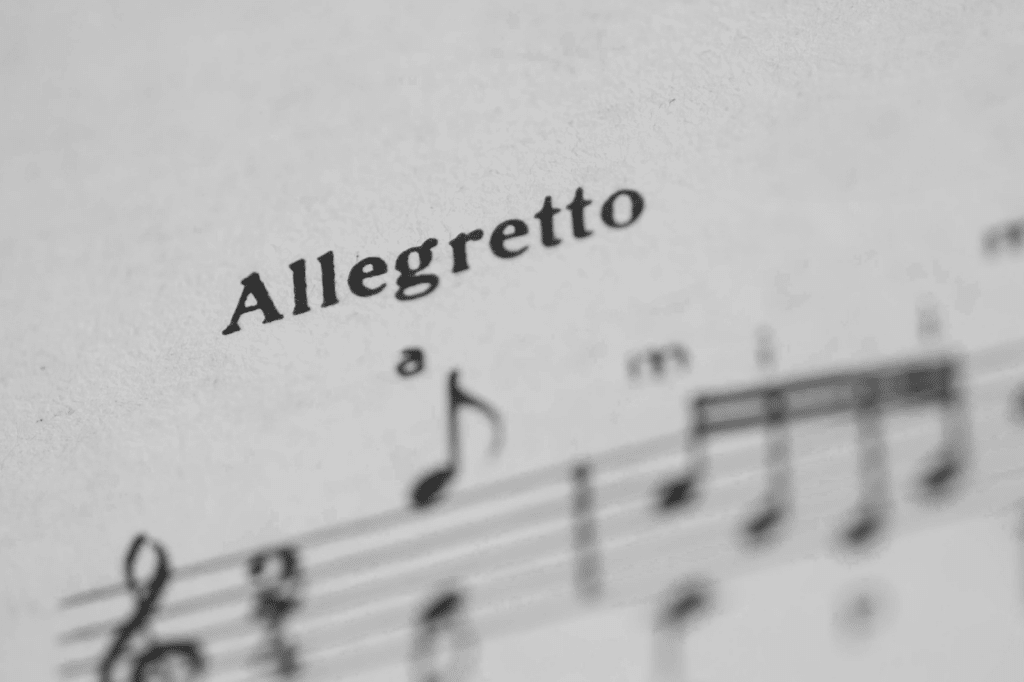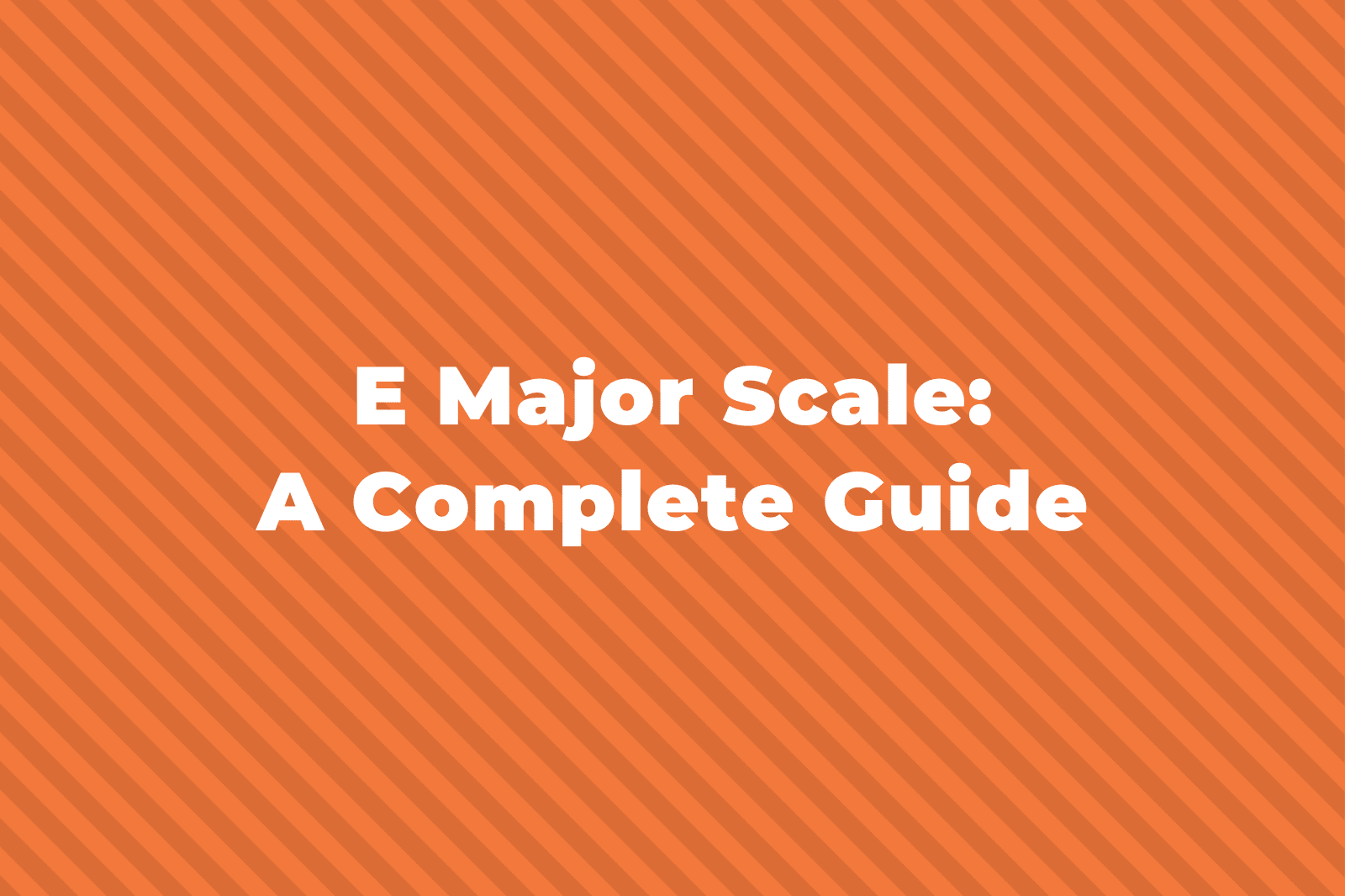Allegretto is an Italian tempo term that means “moderately fast” or “lively, but not too fast.” Think of it as the Goldilocks zone of music tempos — not too fast, not too slow, but just right!
When you see a piece of music marked as allegretto, it’s an invitation to play it with a light and graceful touch. It’s faster than andante (walking pace), but not as rapid as allegro.
Other terms used to describe allegretto are “fluid,” “lively,” “breezy,” and “merry.” It’s the perfect tempo for music that aims to be lively and engaging without overstepping into the realm of hurried or frantic.
How Fast Is Allegretto?

So we know that allegretto translates to “moderately fast” in Italian, but what does that really mean in terms of tempo? One person’s interpretation of moderately fast will be different from the next.
To get a more concrete idea, we can turn to our trusty metronome to get a more accurate range of tempo.
Allegretto generally falls within the range of 102 – 120 BPM (beats per minute). This range gives musicians a practical guideline while still allowing for some personal touch and interpretation.
Recommended Reading
For a deeper dive into how tempos like allegretto shape the music we love, be sure to check out our detailed guide to tempo here.
Historical Context And Etymology Of Allegretto
Deriving from the Italian word “allegro,” which means “joyful” or “lively,” allegretto is affectionately modified with the diminutive “-etto” suffix, translating to “a little lively.”
This captures the essence of allegretto perfectly — it’s lively enough to keep the music engaging, yet restrained enough to maintain a sense of ease and flow.
Its first use in a musical context dates back to 1740 as a tempo marking that was quicker than andante, but not as quick as allegro.
It was during this time, as music transitioned from the Baroque era to the classical era, that allegretto became particularly popular in symphonies and string quartets, where it allowed for a playful and lively, yet controlled and elegant musical narrative.
Related Terms To Allegretto
- Andante: A moderately slow tempo, translating to “walking pace.” It’s more relaxed than allegretto, offering a calm, steady rhythm (56 – 108 BPM).
- Andantino: Often slightly faster than andante but can also mean a bit slower than allegretto, offering a subtly quicker, yet gentle pace (80 – 108 BPM).
- Moderato: This tempo means “moderate.” It’s a middle-ground pace, situated between andante and allegretto — neither too slow nor too fast (108 – 120 BPM).
- Allegro: The term means “fast and bright” or “joyful.” It’s faster and more spirited than allegretto, characterized by a lively energy (120 – 156 BPM).
- Allegro ma non troppo: Translates to “fast but not too much,” similar to allegretto in suggesting a lively tempo with a bit of restraint.
- Allegro moderato: A moderated version of allegro, this tempo is brisker than allegretto and andante, but not as quick as pure allegro (116 – 120 BPM).
- Allegretto vivace: Merges the moderate speed of allegretto with the liveliness of vivace, resulting in a tempo that is both lively and moderately fast.
- Allegro con brio: Meaning “fast with vigor,” it suggests a lively approach to the fast tempo.
Examples Of Allegretto Tempo Music
To help you get a better idea of allegretto, here are a few examples of music pieces marked by this tempo.
“Symphony No. 7 In A Major, Op. 92 (2nd Movement)” By Ludwig Van Beethoven
Up first, we have the wonderful second movement of Beethoven’s Symphony No. 7, which is one of the most famous examples of allegretto in classical music.
Known for its rhythmic motif and somber and simple yet beautiful melody, it showcases the balance and grace of the allegretto tempo.
“Palladio – Allegretto” By Karl Jenkins
Karl Jenkins’ “Palladio – Allegretto” is a standout piece in contemporary classical music, renowned for its rhythmic and captivating melody.
This composition gained widespread recognition and popularity through its use in the famous De Beers diamond advertising campaign.
The Allegretto section, in particular, is celebrated for its powerful and rhythmic elegance, masterfully blending contemporary sensibilities with classical form.
“Symphony No. 6 In F Major, Op. 68 ‘Pastoral’ (5th Movement)” By Ludwig Van Beethoven
And finally, another piece by Beethoven, his Symphony No. 6 in F Major, known as the “Pastoral Symphony,” the 5th movement, marked allegretto. This movement is a beautiful conclusion to the symphony, depicting the calm and joyous atmosphere following a storm.
The allegretto tempo in this movement is perfectly suited to convey a sense of relief and gratitude. Beethoven’s composition here masterfully evokes the pastoral scenes he cherished, with a gentle yet uplifting melody that reflects the pastoral symphony’s overall celebration of nature.



